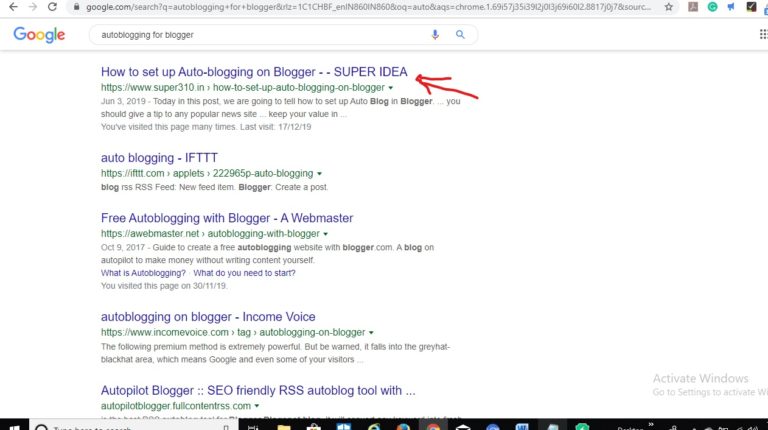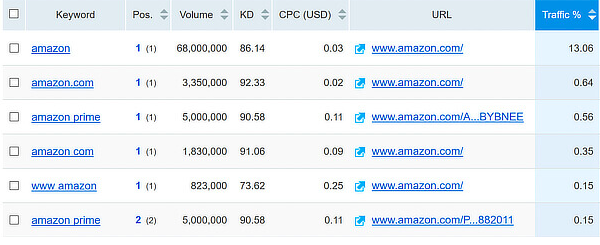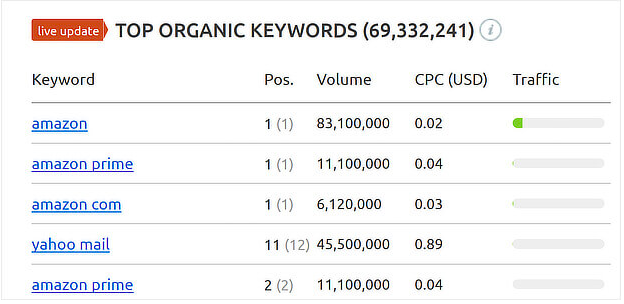Are you using SEO effectively to boost your business?
SEO is essential for generating traffic, authority, leads, and sales, but you’ll only get those benefits if you do it right.
That means that users posted around 216 blog posts while reading these five sentences.
And that only counts WordPress users. If we were to count all the blog posts, that number would surely be higher.
Google is always tweaking its search algorithms, so there is no guarantee that SEO practices that worked in the past will continue to work in the future.
While I often spend 4-5 hours writing my blog posts, the ten minutes I spend optimizing each post are easily the most important.
This is why you need to keep up to date with the latest SEO guidelines if you want your business to be successful.
We are here to help.
Our in-depth guide contains the latest SEO best practices so you can improve the way your content appears in search results and get more traffic, leads, and sales.
Definition: SEO stands for search engine optimization. Which is the art of ranking high in a search engine in the unpaid section, also known as organic listings.
All right, let’s translate that into English. Here is my path:
Search engine optimization (SEO) is the process of optimizing your content online so that a search engine likes to show it as a top result for searches for a certain keyword.
What is SEO?
SEO stands for search engine optimization. It is the practice of increasing the ranking of your web pages in search engines so that they appear higher in search results, thus generating more traffic to your website.
SEO can also mean search engine optimizer. That is a person who is dedicated to search engine optimization.
Search engine optimization efforts are aimed at increasing organic traffic. That’s the traffic you get when visitors click a link in search results to get to your site. That is in contrast to paid traffic, which comes from ads.
How the search works:
Now that you have an idea of the basics of SEO, I’ll take a look at some of its components in detail.
While Google protects its search algorithm quite well and not all of the 200+ determinants are public, Backlinko did a great job of compiling as many of them as possible into one large list.
But first, I need to clarify one thing. There are two sides to the power of SEO, and you should choose yours right now.
How does Google search work?
To understand SEO, you will also need to know how Google search works.
Google aims to deliver relevant search results as part of its bid to “organize the world’s information and make it universally accessible and useful.”
To do that, the search engine has to know what information there is. Here’s how that process works.
- Google has automated software called search bots or spiders. These bots visit web pages in a process called web crawling.
- Then, they add the pages they crawl to Google’s index, which is a huge catalog of trillions of web pages.
- When people search, Google displays the most relevant results from that catalog.
How to check search engine rankings:
One of the first steps to improving SEO is knowing where to start. That means checking your search engine rankings.
Here are a couple of ways to do it.
The easiest way is just by searching the terms you want to rank for. To do that, first, open a private or incognito browser window and search Google. Use the terms you think your customers will use to find your site, then check the results.

But what if you have a large, established website or want to find other terms that you could be ranking for?
In that case, you will have to use a tool. One of our favorite online toolkits is SEMrush, which includes a variety of tools for SEO, content marketing, and search engine marketing.
Here’s how you can find search engine rankings for your web pages with SEMrush.
Go to SEO Toolkit »Organic Research» Positions and enter your domain name. Scroll down to Organic Search Positions to see which keywords your content ranks and where it ranks.

Or you can navigate to Domain Analysis, type in your domain name, and see all the keywords you currently rank for, like in this Amazon search:

Now, let’s see what Google uses to determine which web pages rank well in search engines. These are called SEO ranking factors.
Understand keywords and keyword intent:
Before we continue, let’s recap a few key terms:
- Keywords are words and phrases that describe what your content is about and what people are searching for.
- Keyword research is all about finding those terms so that you can use them correctly in SEO and content optimization in general.
Why do keyword research?
Keyword research can:
- Help you identify the topics your target audience is looking for
- Understand what people really want when they enter specific search terms
- Show you the terms your competitors are targeting so you can beat the competition.
- Help you optimize and guide all marketing activities
We’ll talk more about how to use the keywords you find in a later section, but for now, we’ll focus on the research process itself.
Before we do, let’s look at a few different ways to think about keywords.
As we’ve said, it’s helpful to think about what search engines are trying to find when they enter a particular word or phrase. That’s called keyword intent, which is like the search intent mentioned above.
Understand the intent of keywords:
There are four ways to categorize search intent:
- Navigation: when trying to find a particular site
- Informational – When looking for the answer to a question
- Research: pre-purchase searches
- Transactional: when search engines really want to buy
Ideally, you will optimize your content for all those types of searches. Learn more about content optimization for SEO here.
Don't ignore meta tags:
In every blog post, it is mandatory to write meta keywords. In both the meta keywords and meta descriptions sections, use only specific keywords. In the meta tags section, use all possible relevant keywords for that particular blog post, also include what kind of keywords users can search for.
Search engines get information about your blogging site through meta tags and thus index your site. Meta tags also describe what your blog post is about.
Optimize your URLs:
Keep your URL short and simple. If possible, try to use your main keyword within it. Use clear, easy-to-use URLs for all your blog posts. These are displayed in the address of the web browser.
Suppose you wrote a confusing URL for your blog post and there is another blog that writes similar content but writes a simple and clear URL, then search engines consider the simple ones.
Therefore, optimize your URL for the search engine.
How to do it?
- If possible, include the keyword in the URL, but don’t fill it unnecessarily. It should make sense.
- Make it as short as possible. 50 to 60 characters are said to be good. If it crosses over 100, you should probably rewrite it.
- It would be nice if your page title and URL match, but when doing so, don’t type unclear URLs.
- For example, the title of your post is “Top SEO guide to explode your traffic” then you can optimize the URL as yourblogname.com/ultimate-seo-guide.
Alternative image tags are important:
An image speaks louder than thousands of words. Therefore, in your blog post, use images related to your post.
Including images helps them get massively shared on Pinterest and Twitter. Well, to improve the accessibility of your blog site, you need to write alt text for the image you upload.
The alt text describes what the image is about.
How useful is it?
- If Google doesn’t show the image, at least the alt tag will be shown. This is because it is very difficult for search engines to read. So the search engine can understand if you type alternative text for the image.
- It also helps visually impaired people who use screen readers. So using alt text for the image is good practice. Always be unique when writing alt text for an image.
- Use keywords in the image’s alt text if possible, as it increases the chances that the image will appear in search results.
If you’re using WordPress, it’s very easy to fill in alt text for an image as it displays an alt text dialog when you upload an image.
For more information please read this book- Competitive Research & Market Analysis with SEMrush





